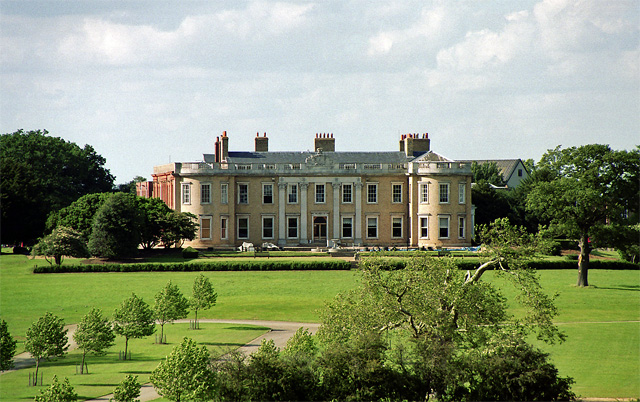Haynes, Bedfordshire on:
[Wikipedia]
[Google]
[Amazon]
Haynes is a village and
 Haynes or Hwanes Manor belonged to Sir Robert Newdigate, who died in 1613, and King James was a regular visitor.
Haynes or Hwanes Manor belonged to Sir Robert Newdigate, who died in 1613, and King James was a regular visitor.
/ref> The present mansion of
civil parish
In England, a civil parish is a type of administrative parish used for local government. It is a territorial designation which is the lowest tier of local government below districts and counties, or their combined form, the unitary authorit ...
in Bedfordshire
Bedfordshire (; abbreviated Beds) is a ceremonial county in the East of England. The county has been administered by three unitary authorities, Borough of Bedford, Central Bedfordshire and Borough of Luton, since Bedfordshire County Council ...
, England, about seven miles (11 km) south of Bedford
Bedford is a market town in Bedfordshire, England. At the 2011 Census, the population of the Bedford built-up area (including Biddenham and Kempston) was 106,940, making it the second-largest settlement in Bedfordshire, behind Luton, whilst ...
. It includes the small hamlet of Haynes Church End. It used to be known as Hawnes. North from Haynes is a hamlet named Silver End, then further up is Herrings Green, Cotton End
Cotton End is a small village and civil parish on the outskirts of Bedford. It became its own parish as of 1 April 2019, having previously been part of the parish of Eastcotts. Ordnance Survey maps from the 1880s show its name as 'Cardington Cot ...
and Shortstown
Shortstown is a village and civil parish on the outskirts of Bedford, on a ridge above the River Great Ouse, originally called Tinkers Hill.
This ridge also overlooks the two other parts of Eastcotts – Harrowden to the north and Cotton End ...
. There is a pub, "The Greyhound", a shop, a post office, a village hall and a Lower School.
In 1730 the philosopher John Gay became Vicar
A vicar (; Latin: '' vicarius'') is a representative, deputy or substitute; anyone acting "in the person of" or agent for a superior (compare "vicarious" in the sense of "at second hand"). Linguistically, ''vicar'' is cognate with the English pre ...
of Wilshamstead (later adding the living
Living or The Living may refer to:
Common meanings
*Life, a condition that distinguishes organisms from inorganic objects and dead organisms
** Living species, one that is not extinct
*Personal life, the course of an individual human's life
* ...
of Haynes).
Etymology
The name ''Haynes'' is first attested in theDomesday Book
Domesday Book () – the Middle English spelling of "Doomsday Book" – is a manuscript record of the "Great Survey" of much of England and parts of Wales completed in 1086 by order of King William I, known as William the Conqueror. The manus ...
of 1086, as ''Hagenes''. This derives from an Old English
Old English (, ), or Anglo-Saxon, is the earliest recorded form of the English language, spoken in England and southern and eastern Scotland in the early Middle Ages. It was brought to Great Britain by Anglo-Saxon settlers in the mid-5th c ...
word *''hægen'' or *''hagen'' meaning 'enclosure', in its plural
The plural (sometimes abbreviated pl., pl, or ), in many languages, is one of the values of the grammatical category of number. The plural of a noun typically denotes a quantity greater than the default quantity represented by that noun. This de ...
form.
Manor
 Haynes or Hwanes Manor belonged to Sir Robert Newdigate, who died in 1613, and King James was a regular visitor.
Haynes or Hwanes Manor belonged to Sir Robert Newdigate, who died in 1613, and King James was a regular visitor. Anne of Denmark
Anne of Denmark (; 12 December 1574 – 2 March 1619) was the wife of King James VI and I; as such, she was Queen of Scotland from their marriage on 20 August 1589 and Queen of England and Ireland from the union of the Scottish and Eng ...
came in July 1605 and was entertained by a Scottish singing woman and Morris dancers. King James came to Haynes on 22 July 1615. The next day he heard that his brother-in-law Christian IV
Christian IV (12 April 1577 – 28 February 1648) was King of Denmark and Norway and Duke of Holstein and Schleswig from 1588 until his death in 1648. His reign of 59 years, 330 days is the longest of Danish monarchs and Scandinavian monar ...
was in London at Denmark House, and he raced back riding through a hail storm.
Haynes manor was acquired in about 1667 by Vice Admiral Sir George Carteret, 1st Baronet (c.1610-1680) of Jersey.See: article in Country Life Magazine, by C. Hussey "Hawnes, Bedfordshire", Country Life, 29 December 1934, pp.692-697 featuring Hawnes (Haynes Park) the property of Hawnes School. With a 6 page write up with black and white illustrations of the exterior and interior of the hous/ref> The present mansion of
Haynes Park
Haynes Park is a Georgian country house which stands in parkland at Haynes Church End, Bedfordshire, England. It is a Grade I listed building.
Originally known as Hawnes Park it was built c.1725 for John Carteret, 2nd Earl Granville, a promine ...
was built c.1725 by his son John Carteret, 2nd Earl Granville
John Carteret, 2nd Earl Granville, 7th Seigneur of Sark, (; 22 April 16902 January 1763), commonly known by his earlier title Lord Carteret, was a British statesman and Lord President of the Council from 1751 to 1763; he worked extremely close ...
.
External links
Notes